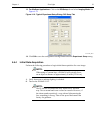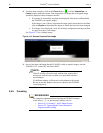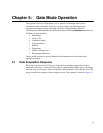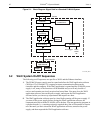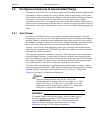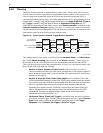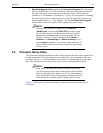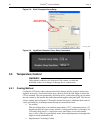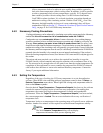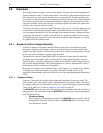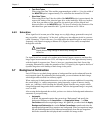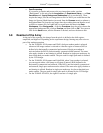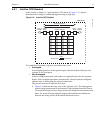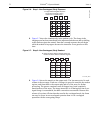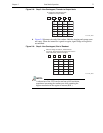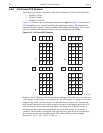
Chapter 5 Gate Mode Operation 67
Allows temperature lock to be achieved more rapidly than would be required to
lock at the same temperature with air-cooling alone. In addition, it will be possible
to achieve temperature lock at lower temperatures, typically 10-15 degrees lower
than would be possible with air-cooling alone. Use the Princeton Instruments
CoolCUBE
II
coolant circulator. It is a closed circulation system that depends on
ambient air-cooling of the circulating coolant. With the CoolCUBE
II
, even if the
laboratory has high humidity (as long as it is non-condensing,) there will be no
condensation. Refer to Section 3.7, Connect the Circulator [Liquid-Cooled Cameras
Only], on page 42 for CoolCUBE
II
setup instructions.
5.5.2 Necessary Cooling Precautions
Cooling performance can be enhanced by circulating water with a temperature below laboratory
ambient but
this will increase the risk of condensation inside the PI-MAX4.
Condensation can cause
catastrophic failure of camera electronics. Any resulting damage
would be considered to have resulted from improper operation and will
not be covered by the
Warranty.
Even ordinary tap water is too cold to be used without risk! For safety, water
should be no colder than the ambient temperature. Closed circulation systems that depend on
ambient air-cooling of the circulating water will generally give good results. If water colder than
the laboratory ambient temperature must be used, it is absolutely essential that the PI-MAX4 be
operated where the humidity is low enough to prevent internal condensation. If the coolant is
below the freezing temperature of water, use a mixture of 50% water and 50% ethylene glycol as
the coolant.
The easiest and most practical way to achieve the required low humidity is to put the
PI-MAX4 inside a closed container and purge the container with a continuous flow of dry
air. The air must be dry enough to have a dew point lower than the coolant temperature. On
completion of the experiment, be sure to continue the purge until the PI-MAX4’s internal
cold surfaces have had time to warm to the ambient laboratory temperature. Contact the
factory if you require additional information.
5.5.3 Setting the Temperature
Regardless of the type of cooling, the CCD array temperature is set via the application
software. When WinX is the controlling software, temperature control is done via
Setup —>
Detector Temperature
menu choice. When Light Field is being used, temperature control is
done
on the Sensor expander.
Once the desired
Target Temperature {Temperature Setpoint} has been set, the software
controls the camera's cooling circuits to reach set array temperature. On reaching that
temperature, the control loop locks to that temperature for stable and reproducible
performance. When the
Target Temperature {Temperature Setpoint} has been reached,
the current temperature is
Locked. The on-screen indication allows easy verification of
temperature lock.
Temperature lock to a set temperature in the operating range will typically occur within ten
minutes. Another five minutes will be required to reach maximum temperature stability.
NOTE:
The WinX Detector Temperature dialog will not display
temperature information while you are acquiring data.



